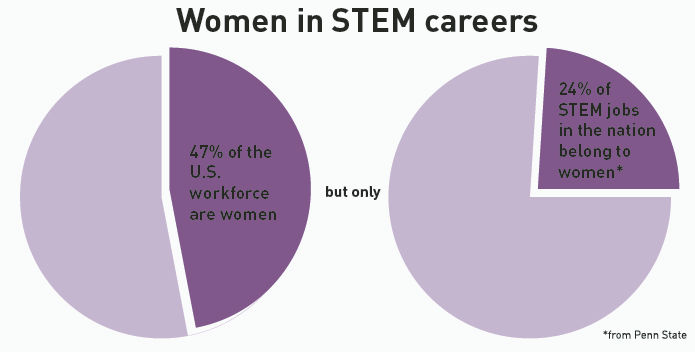Asian economies still recovering from financial crises
December 1, 1999
In the fall of 1997, some of the fastest-growing Asian economies were on the brink of collapse.
This economic downturn in countries such as Thailand, Hong Kong, Indonesia, Malaysia, South Korea, Singapore, the Philippines and Japan surprised many experts after the unprecedented growth rates of those “tiger economies” over the previous three decades.
As the economies of Asian nations begin to get back on track, Iowa State experts are speculating about the cause of the crisis.
Harvey Lapan, university professor of economics, said there were four main factors that contributed to the Asian economic crisis.
The primary factor was overlending by private-sector banks to huge, privately owned corporations, for example the Hyundai and Samsung companies.
Lapan said overlending forced the banks to borrow U.S. dollars from Western banks, which Asian banks would repay when the corporations repaid their loans with the required interest rates.
However, the corporations defaulted on payment since they had borrowed massive amounts of money, leading to the second contributing factor: the liquidity crisis.
Lapan said the liquidity crisis happened because banks were running short of money that would be withdrawn by individual clients who maintained accounts.
The lack of confidence on the part of individual clients led them to demand that their money be fully returned to them, he said, causing further complications for Asian economies.
Last but not least, Lapan said the fluctuation of exchange rates helped precipitate the crisis. The depreciation of the Asian currencies against the U.S. dollar meant that Asian banks had to repay more money than they had initially borrowed from Western banks.
“In our jargon, we say the banks are exposed to foreign-exchange risks,” he said.
However, he said the problem was not insoluble.
“The typical wisdom would’ve been for the banks to hedge their exchange rates,” he said.
Lapan said “forward contracts” would have been one solution.
“[Forwarding contracts] is an insurance policy that says if your currency goes down, we’ll give you money,” he said.
In example of forward contracting, a nation such as South Korea would agree to give a Western bank a certain amount of Korean wons in return for an equivalent amount of U.S. dollars in the case of the won’s depreciation.
Lapan said there are no legal limitations to pursuing this method.
“Anybody can legally do it,” he said.
Lapan said forward contracts were rarely used because many Asian banks didn’t realize the risky situation they were placing themselves in by overlending, and the practice would have limited their profit potential.
Mack Shelley, professor of political science, said the governments of some of those Asian countries also played a major role in bringing down growth and investment rates.
He used Indonesia as an example to illustrate his opinion.
Suharto, ex-president of Indonesia, adopted “crony capitalism” as his philosophy for running the country, often providing unfair economic breaks to his powerful friends, Shelley said.
Suharto, who stayed in power from 1965 to 1997, directed his economic policies toward helping “a class of people who were already very well-off to begin with,” Shelley said.
Shelley said the vast majority of Indonesians were already living within limited means and did not have a cushion when the economy went sour.
Although Suharto is no longer in power, Shelley said Indonesia’s economy, as well as several other tiger economies, are still plagued by governments that favor the “corporate elite.”
Shelley proposed two possible solutions that would help reduce the power of the corporate elite.
One is to strengthen labor and student unions to stand up for the economic rights of those in need.
Another idea he suggested would be the widespread support of democracy and opposition to elitist domination.
Lapan agreed such corporations represent an extremely dominant force in Asia.
“You can definitely say that [big corporations] yield significant political power within their countries,” he said.
He said the economic situation is much better now, but he added that big corporations will not be able to sustain the miraculous growth rates they achieved in the 1980s.
The situation may have been worse without international intervention, Lapan said.
He said the International Monetary Fund (IMF) as well as some European and U.S. banks provided the tiger economies with loans to resolve the liquidity crisis they were facing.
Willy Rahardjo, senior in electrical engineering from Indonesia, said the crisis impacted his family back home. He said because prices for food and other necessities were rising so high, his family had to save more money and cut its spending.
Rahardjo said the crisis resulted in people rioting in the streets against rising prices, especially those for food.
He blamed the crisis largely on the Suharto administration.
Rahardjo said people still doubt the banks’ ability to operate successfully. So far, only the most reputable banks are getting brisk business, he said.
Although Rahardjo said he expects the Indonesian economy to fully recover, he said the recovery can’t happen overnight.
“[Recovery] will take a while, maybe a year,” he said.
Jae-Joon Kim, graduate student in electrical and computer engineering, was less optimistic about the situation in his home country.
Kim, who is a South Korea native, described the economic situation in his country as “tough.”
He said his father, who owns a private construction firm in South Korea, is not receiving enough business orders to stay employed.
















